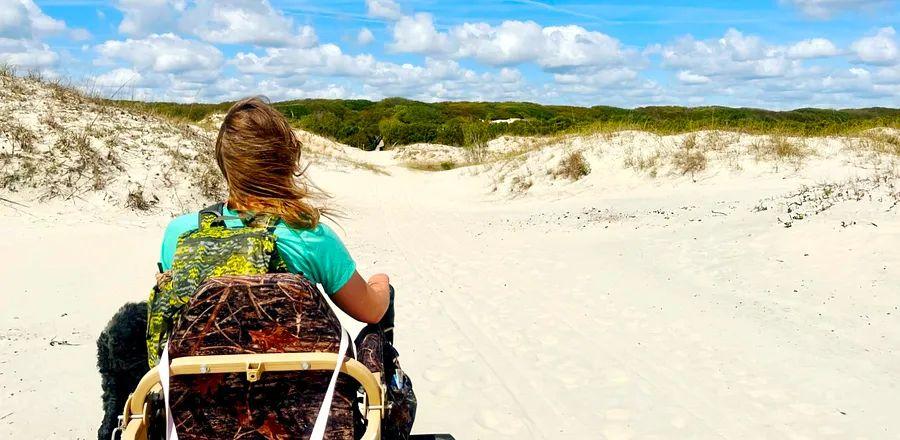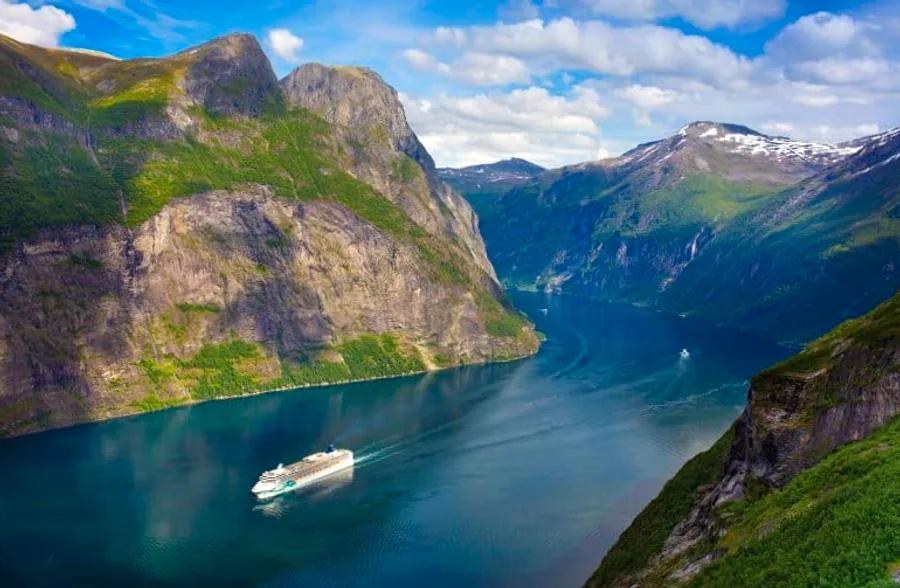How Outdoor Areas in the U.S. Are Becoming More Inclusive

Aimee Copeland was a vibrant 24-year-old graduate student whose life took a drastic turn. Once immersed in rock climbing, backpacking, and trail running in her beloved Georgia, she found herself in a wheelchair, grappling with whether she would ever reconnect with those passions. A zip-lining accident in 2012 left her battling necrotizing fasciitis, a severe bacterial infection that led to the loss of both hands, her right foot, and her entire left leg.
“As I spent more time in that hospital bed, watching daytime television during outpatient rehab, I realized that this community is the one that needs the outdoors the most,” Copeland shared with Dinogo, emphasizing that individuals with disabilities often feel the most disconnected from nature.
Not only did Copeland adapt to enjoying the outdoors from her wheelchair, but she also became a licensed clinical social worker and holistic psychotherapist, dedicated to helping others reconnect with nature. After establishing the Aimee Copeland Foundation, a nonprofit focused on creating outdoor opportunities for those with physical disabilities, she initiated All Terrain Georgia, a program in collaboration with the Georgia Department of Natural Resources to offer free all-terrain wheelchairs at 12 state parks. The initiative is gaining traction: Three Georgia parks managed by the National Park Service—beginning with Cumberland Island National Seashore, one of Copeland's favorites—will introduce pilot programs in 2023 and 2024.
Copeland’s initiatives are part of a larger movement aimed at enhancing accessibility in the outdoors and the national parks, while also prioritizing preservation, achieved through a blend of technology, appropriate gear, and increased awareness.
Closing the gap between accessibility and outdoor experiences
For many years, the focus has been on building accessible trails by eliminating natural obstacles, explains Jeremy Buzzell, who has overseen the National Park Service’s Accessibility Program since 2014. With over two decades in the accessibility sector, beginning as a special education teacher, he notes, “Now we're seeing a surge in technology that enables people to utilize trails as they are, without needing to modify them, since park visitors have equipment that can navigate the challenges.”
The all-terrain chairs exemplify this shift. The Action Trackchair, the model selected by Copeland for her initiative, features caterpillar tracks designed to traverse rocky surfaces, power through streams and sand, and easily ascend slopes. They operate electrically and leave a minimal impact—“no more than footprints,” she emphasizes, noting they’re battery-powered and quieter than traditional four-wheelers. She further explains, “We carefully assess areas of the parks that aren’t suitable for these chairs to ensure they won’t disturb the soil and environment.”

Photo courtesy of Aimee Copeland
Users must be certified to operate the all-terrain wheelchairs, and All Terrain Georgia’s website provides comprehensive instructions to facilitate this process. This requirement hasn’t deterred anyone; Copeland has received numerous testimonials from individuals with mobility challenges about how All Terrain Georgia has enabled them to enjoy the outdoors alongside their loved ones. For instance, a woman walked her service dog for the first time using an all-terrain wheelchair in Panola State Park, a father was able to accompany his wife and son on their daily walks at Red Top State Park for the first time in 20 years, and there was even a marriage proposal facilitated by one of these chairs atop a mountain in Cloudland Canyon State Park.
Given the initiative's success and increasing demand, Copeland plans to expand the program into North Carolina, her current home, as well as into state parks, national parks, and historical and wildlife sites nationwide. “I dream of taking a cross-country road trip and exploring trails with my family and friends,” she says.
Alongside Georgia’s program, states like Colorado, Michigan, Minnesota, and South Dakota offer all-terrain wheelchairs on public trails in state and national parks. In 2019, Sleeping Bear Dunes National Lakeshore in Michigan became the first NPS site to collaborate with a disability organization to ensure that all-terrain chairs could be utilized in the park, which also features an accessible canoe and kayak launch and nearby accessible campground.
Advancements in accessibility—but still an information gap
The NPS is not solely concentrating on wheelchair access. Over the decades, the organization has enhanced sites and exhibits with audio descriptions of scenic views and natural features, tactile elements, braille, and more. Additionally, the NPS provides an Access Pass, a complimentary, lifetime pass available to U.S. citizens and permanent residents with a medically verified permanent disability. While not exclusive to the NPS, the Access Pass grants admission to over 2,000 recreational sites and offers discounts on campsites and guided tours.
“I believe people with disabilities would be pleasantly surprised by the accessibility of our national parks, the number of campgrounds that offer accessible sites, and how friendly our staff is towards visitors with disabilities,” Buzzell states.
While significant strides have been made to enhance accessibility in national parks for visitors with disabilities, there remains a need to improve the availability of this information.
“The greatest hurdle I face when considering a visit to a national park is locating accessibility information,” shares Cory Lee, a wheelchair user and author of the travel blog Curb Free with Cory Lee. He acknowledges that the NPS official website includes an accessibility page for each park (and some provide PDFs like the Yosemite Accessibility Guide and Acadia Accessibility Guide), but notes that these pages often contain limited details. “I typically have to search through various blogs and websites for more insights, which can be quite time-consuming.” Lee suggests consulting Candy Harrington’s “Barrier-Free Travel” book series for comprehensive information.
Thanks to accessible-travel advocates like Lee, there is more guidance available for exploring the outdoors in a wheelchair. The award-winning blogger highlights some of his favorite parks, including Acadia National Park, which boasts numerous accessible trails: “Jesup Path is a solid choice, but Acadia features around 45 miles of carriage roads, most of which are easy to navigate in a wheelchair.” He also loves the breathtaking views from Cadillac Mountain Summit. “While most national parks have one or two accessible trails, Acadia offers so much more, which is why it’s one of my favorite places in the world.”

Photo courtesy of Cory Lee
A native of Georgia, Lee enjoys stepping off the paved paths as well. He has tested the All Terrain Georgia chairs and hopes to see more available in national parks in the future.
“As a child, I always longed to experience the outdoors with my family and friends, but it was incredibly challenging,” he shares. “Using all-terrain wheelchairs allowed me to truly connect with nature for the first time.”
Kate Nelson, who writes the travel blog Navigating with the Nelsons, frequently visits national parks with her daughter Mary, who has spinal muscular atrophy and relies on a wheelchair. Although the NPS lists accessible trails, Nelson notes it can be difficult to find out which parks offer additional accessible experiences. For instance, during her visit to Glacier National Park, she struggled to find information regarding the park’s Red Bus Tour.
Yellowstone and Yosemite are among the parks that impress Nelson with their comprehensive accessibility guides. “Yellowstone is exceptionally accessible; the boardwalks allow for easy navigation throughout much of the park. Additionally, there are Yellow Bus Tours and accessible boat rides available.” The Nelsons also enjoy camping in their RV and recommend Fishing Bridge near the Yellowstone River for accessible RV sites and Yosemite for its accessible paths through the redwoods and to the Lower Falls area.
Buzzell emphasizes that national parks are actively developing more access points for visitors with disabilities beyond just mobility concerns, including those who are neurodivergent and autistic, and the Access Pass is also available to them. Big Thicket National Preserve in Texas offers sensory kits, a sensory story, and a soundscape guide for its guests, while Gettysburg National Military Park in Pennsylvania has introduced sensory-friendly hours at its museum and visitor center, which involve lowering loud sounds from audiovisual displays, interactive exhibits, and films, or switching them off when feasible. New York’s Letchworth State Park features a mile-long Autism Nature Trail, designed specifically as an outdoor experience that considers neurodiversity.
“As I approach my 50s and experience declines in my vision, hearing, and mobility, my passion for enjoying national parks remains unchanged. However, my approach to experiencing them may need to adapt,” says Buzzell. “We truly believe that our national parks are for everyone.”

1

2

3

4

5
Evaluation :
5/5